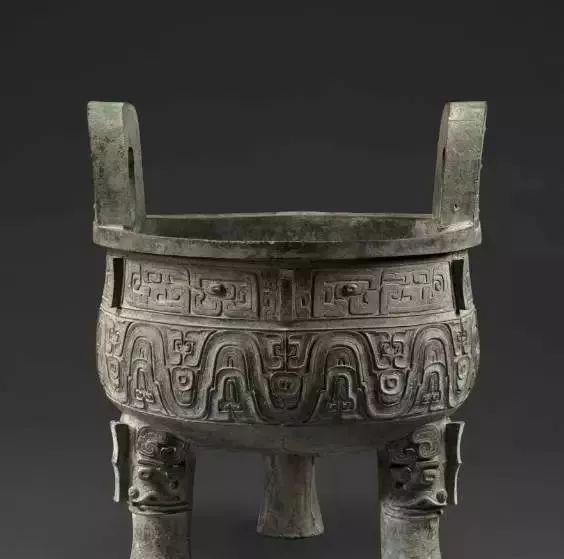
Illustrations? Western Zhou Dynasty And local close-ups
The Western Zhou Dynasty Keding is a kind of bronze vessel for cooking food, so it is also known as the Shanfu Keding, cast in the late Western Zhou Dynasty.
The Great Keding is a bronze food vessel cast by the noble "Ke" in praise of the king of the Zhou Dynasty, Ji Peifang, and sacrificing his grandfather Shi Hua's father.
In the sixteenth year of the Guangxu Dynasty (1890 AD), Da Ke Ding was excavated in Ren Village, Fufeng Famen Town, Shaanxi Province, and is now treasured in the Shanghai Museum.
The Da Ke Ding Tong is nearly one meter high, weighs about 400 pounds, and has an inscription of 28 lines and 29 crosses in the abdomen. In the inscription, the caster praises the greatness of the King of Zhou, praises the merits of his grandfather in assisting the Zhou royal family, and records the sacrifice clothes, fields, and slaves he received from the King of Zhou.
Soon after the excavation of Da Ke Ding, it was purchased by the Yuan historian Ke Shao, and the great collector Pan Zuyin heard the news and asked Ke Shao to cut love with heavy money, and later hid it in the Pan family mansion in Suzhou.
Zu Yin collected heavyweight national treasures such as Da Ke Ding and Da Lu Ding, and this news did not go away and became a hot topic in the streets and alleys of Beijing.
In the early years of the Republic of China, a Chinese-American found the Pan family and offered to buy it for hundreds of taels of gold, but the Pan family refused.
In the 1930s, an official planned to hold an exhibition in a newly built building in Suzhou and invited the Pan family to send bronzes such as Da Ke Ding to the scene for display, but the Pan family politely refused.
The ancestral property of the Pan family was passed down to Pan Zuyin's younger brother Pan Zunian.
During the War of Resistance Against Japanese Aggression, after the death of Pan Zunian's grandson Pan Chengjing, his granddaughter-in-law Ding Shi took charge of the family and changed his name to Pan Dayu.
At that time, Panda was only twenty years old, and he supported the responsibility of protecting the family's collection.
Pan Dayu asked two carpenters to help, and the family packed the treasures of Dading and other family treasures in wooden boxes at night and buried them in the ground of the house.
After the fall of Suzhou, seven groups of Japanese Kou took turns to loot and rob the Pan family, and most of the property was looted.
The Japanese commander Matsui interrogated Pan Dayu and asked her to tell her the whereabouts of the treasures such as the Great Keding in her family's collection, PanDayu was vain and snaked, and Matsui found nothing.
When the War of Resistance was won, the Pan family took out the treasure and stored it in an empty house, using some debris to hide it from people's eyes and ears.
In July 1951, Pan Dayu, who was living in Shanghai, wrote a letter to the Shanghai Cultural Management Commission, in which he mentioned: "The Second Dading of Luke is an important cultural relic of national significance, and it is urgent to store it and keep it permanent." Sincerely willing to present the two great dings. ”
The Shanghai Cultural Affairs Commission held a grand ceremony to commend Mr. Pan Dayu for his righteous deeds.
Since then, Da Ke Ding has been treasured by the Shanghai Museum and has become the treasure of the town museum where the museum is forbidden to leave the country.